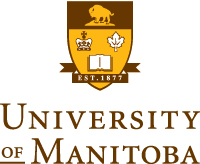2014 CMS Summer Meeting
University of Manitoba, June 6 - 9, 2014
Org: Adam Clay (Manitoba), Eduardo Martínez-Pedroza (Memorial) and Dale Rolfsen (UBC)
[PDF]
- MAXIME BERGERON, University of British Columbia
The Topology of Representation Spaces [PDF]
-
Let $\Gamma$ be a finitely generated group and let $G$ be a reductive complex linear algebraic group (e.g. $\mathrm{SL}_n\mathbb{C}\,$). The representation space $\mathrm{Hom}(\Gamma,G)$ carved out of a finite product of copies of $G$ by the relations of $\Gamma$ has many interesting topological features. From the point of view of algebraic topology, these features are easier to understand for the compact subspace $\mathrm{Hom}(\Gamma,K)\subset \mathrm{Hom}(\Gamma,G)$ where $K$ is a maximal compact subgroup of $G$ (e.g. $\mathrm{SU}_n$). Unfortunately, the topological spaces $\mathrm{Hom}(\Gamma,G)$ and $\mathrm{Hom}(\Gamma,K)$ usually have very little to do with each other; for instance, some of the connected components of $\mathrm{Hom}(\Gamma,G)$ may not even intersect $\mathrm{Hom}(\Gamma,K)$! In this talk, I will discuss exceptional classes of groups $\Gamma$ for which $\mathrm{Hom}(\Gamma,G)$ and $\mathrm{Hom}(\Gamma,K)$ happen to be homotopy equivalent, thereby allowing one to compute otherwise inaccessible topological invariants.
- KHALID BOU-RABEE, CCNY CUNY
Full residual finiteness growths of nilpotent groups [PDF]
-
Full residual finiteness growth of a finitely generated group measures how efficiently word-metric $n$-balls inject into finite quotients. The full residual finiteness growth of any finitely generated nilpotent group is determined precisely by a single monomial. We indicate our proof through several examples and present a result that characterizes nilpotent groups for which this growth matches the group's word growth. This talk covers joint work with Daniel Studenmund.
- INNA BUMAGIN, Carleton University
Free Lyndon length functions and CAT(0) spaces [PDF]
-
I will give a definition of a group equipped with a free Lyndon $\mathbb{Z}^n$-length function and explain how one can construct a CAT(0) space on which such a group acts properly discontinuously and co-compactly.
This is joint work with Olga Kharlampovich.
- CHRISTOPHER CAPPADOCIA, McMaster
Weak hyperbolic dimension of metric spaces [PDF]
-
Hyperbolic dimension is a quasi-isometry invariant of metric spaces introduced
by Buyalo and Schroeder for its applications to quasi-isometric nonembedding problems.
I will introduce a new quasi-isometry invariant of metric spaces called
weak hyperbolic dimension,
which gives a lower bound for hyperbolic dimension.
Like hyperbolic dimension, weak dimension detects the quasi-isometry non-equivalence of
hyperbolic $n$-space and Euclidean $n$-space.
Weak dimension is easier to compute than hyperbolic dimension,
and can be computed for a broad group of spaces.
I will also discuss applications to nonembedding problems.
- ADAM CLAY, University of Manitoba
Bi-orderability of fundamental groups of $3$-manifolds [PDF]
-
In recent years there has been an effort to determine exactly which fundamental groups of $3$-manifolds are left-orderable (also bi-orderable), most notably because these properties are conjectured to be connected with Heegaard-Floer homology.
With the recent work of Agol and Wise, we now know that the fundamental group of every closed hyperbolic $3$-manifold is \textit{virtually} bi-orderable, yet the problem remains to precisely determine which fundamental groups are bi-orderable (not just virtually so). In this talk, I will outline exactly what is known thusfar in terms of bi-orderability of fundamental groups, as well as directions for future research.
- SPENCER DOWDALL, University of Illinois at Urbana-Champaign
Fibrations and polynomial invariants for free-by-cyclic groups [PDF]
-
The beautiful theory developed by Thurston, Fried and McMullen provides a near complete picture of the various ways a hyperbolic $3$--manifold $M$ can fiber over the circle. Namely, there are distinguished convex cones in the first cohomology $H^1(M;\mathbb{R})$ whose integral points all correspond to fibrations of $M$, and the dynamical features of these fibrations are all encoded by McMullen's ``Teichm\"uller polynomial.''
This talk will describe recent work developing aspects of this picture in the setting of a free-by-cyclic group $G$. Specifically, I will introduce a polynomial invariant that determines a convex polygonal cone $\mathcal{C}$ in the first cohomology of $G$ whose integral points all correspond to algebraically interesting splittings of $G$. The polynomial invariant additionally provides a wealth of dynamical information about these splittings. This is joint work with Ilya Kapovich and Christopher J. Leininger.
- JONATHAN LEMAIRE-BEAUCAGE, Université du Québec à Montréal
Left-orderability of the fundamental group of the double branched cover of links [PDF]
-
In 2011, Boyer, Gordon and Watson stated the following conjecture : An irreducible rational homology 3-sphere is an L-space if and only if its fundamental group is not left-orderable. Ozsvath and Szabo had already shown that the double branched cover of a quasi-alternating link is an L-space. In agreement with their conjecture, Boyer, Gordon and Watson showed that the fundamental group of the double branched cover of alternating links, a subset of quasi-alternating links, is not left-orderable.
In this talk, I will discuss work to extend the result of Boyer, Gordon and Watson to non-alternating quasi-alternating links. In particular, we examine the (non) left-orderabilty of the fundamental group of the double branched cover of every knots of 10 and less crossings. We have also found new infinite families of non-Montesinos, non-alternating, quasi-alternating knots for which the fundamental group of the double branched cover is not left-orderable.
- TALI PINSKY, UBC
Geodesics on Surfaces, as Knots. [PDF]
-
In this talk we will consider some topological properties of closed geodesics on a hyperbolic surface. The geodesics can be lifted to the three dimensional unit tangent bundle of the surface, and we will discuss their knot properties therein. In particular we will prove that every such geodesic is a prime knot. Time permitting, we will also describe one of the main tools to study these geodesics, the Birman-Williams templates.
- JENNY WILSON, University of Chicago
Stability phenomena for sequences of representations of the classical Weyl groups and topological applications [PDF]
-
Over the past three years, Church, Ellenberg, Farb, and Nagpal developed the theory of FI-modules for studying sequences of representations of the symmetric groups. I will outline their work, and explain how it adapts to sequences of representations of any family of classical Weyl groups. We can use this theory to describe the structure of a variety of sequences coming from algebra, geometry, and topology, including the cohomology rings of several families of groups related to the pure braid groups.
- DANIEL WOODHOUSE, McGill
Virtually Special Tubular Groups [PDF]
-
A graph of groups with $\mathbb{Z}^2$ vertex groups and cyclic edge groups is referred to as a Tubular Group. In a paper of Wise, a necessary and sufficient condition was given for a tubular group to act freely on a CAT(0) cube complex, and a stronger condition for it to act properly and cocompactly. In this talk I will outline recent results that address the question of finite dimensionality and virtual specialness of the cube complex. I will address distortion of codimension 1 subgroups.







